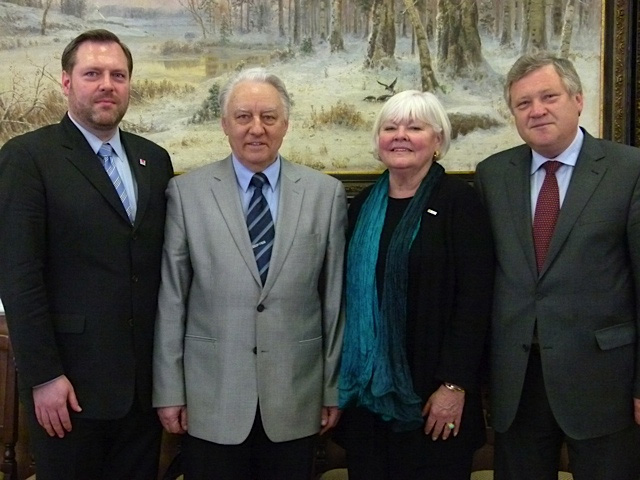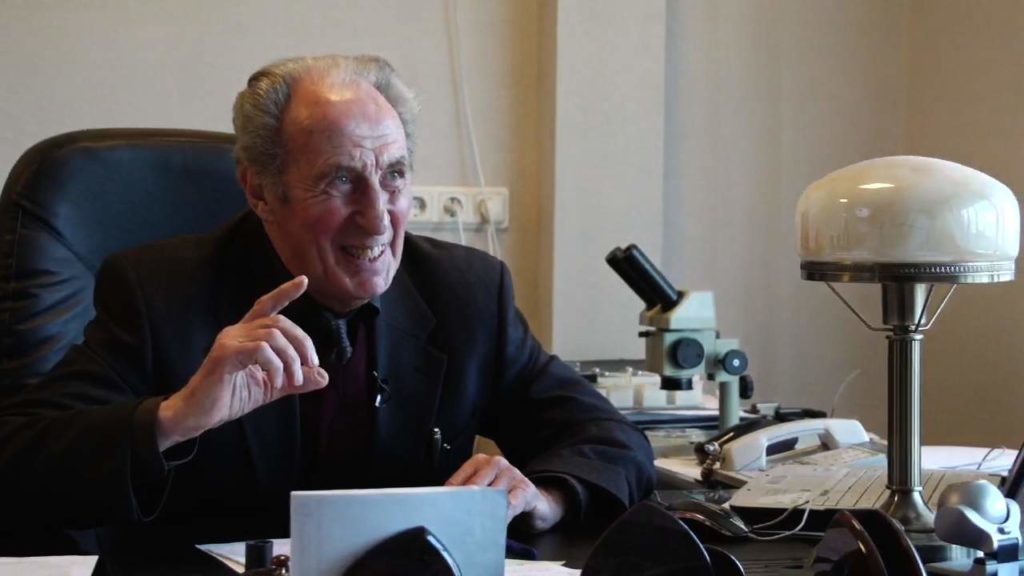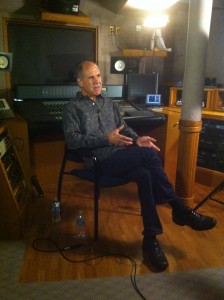
Oral histories have the capability of breathing life into inanimate objects. They can bridge gaps by providing introductions to otherwise unknown people, remote places, or obscure things. Most importantly, oral histories have the ability to merge and connect the past with the present, creating a lasting legacy for future generations.
As Oral History and Media Coordinator at the Computer History Museum and a newbie to the tech world (I studied art history and preferred to write most papers in a ratty, but much loved, spiral bound notebook before typing them), I have been fortunate enough to receive a first class crash course in computer history from the interviewees of CHM’s Oral History Program. What better way to learn than from the best, eh? Fresh from an academic discipline where the majority of research is limited to and dependent solely upon objects (public records, journals, and letters can be rare gems), computer history is fortunate in that its story is relatively young in comparison to other areas of study. This affords scholars the opportunity to gain a more complete history by studying not just the formal qualities of objects, but the stories of their makers—the Michelangelos and Rembrandts of the information age. The Computer History Museum recognizes the importance of this last bit, and it is no more so apparent than by our extensive collection of oral histories.
The Museum’s oral histories collection numbers more than 500 audio and video interviews and panel sessions, with anywhere between 60 to 90 new interviews added every year. From the personal to the technical, CHM’s oral histories aim to cover the early life, education, and career to current ventures, advice for young people, and greatest achievements for each of our interviewees.
CHM’s Oral History Program is multifaceted, and relies on the determination and dedication of many individuals, including the subject expertise of our curators, an incredible and talented media team, and countless never-cease-to-amaze volunteers. I’d like to give you a look at some of the ways our Oral History Program is actively working to tell the story of computer history. It really does take a village, or in our case, a museum.
Over the last year, we have seen an exciting expansion in the types of oral histories the Museum is conducting. In addition to our one-on-one interviews with experts in the field, CHM has begun zeroing in on major themes and common threads that intertwine to make up the rich and complex history of computing by conducting interviews that form part of a larger oral history series.
In an ambitious effort to provide a more comprehensive view of the history and impact of semiconductor technology, CHM’s Semiconductor Special Interest Group (SEMI SIG) has embarked upon a groundbreaking endeavor to unearth the stories pertaining not only to Silicon Valley, but to the international semiconductor industry as well. Last year, 10 oral histories were successfully conducted in Taiwan thanks to the meticulous coordination of then-SEMI SIG chair Rosemary Remacle, forming the Taiwanese Information Technology Pioneers series. In May, Remacle along with CHM curator Alex Bochannek, journeyed to Moscow and St. Petersburg to conduct oral histories of seven Soviet-Era Russian computer scientists, including Nobel Prize laureate Dr. Zhores Alferov and Lenin Prize winner Dr. Igor Grekhov. The transcription and translation of these oral histories was funded by the Russian Venture Company. Transcripts from this series will be available in early 2013.

Alex Bochannek and Rosemary Remacle, with interviewees Dr Victor Tsvetov (left center) and Dr. Vladimir Popov (right) at Svetlana Semiconductor Joint Stock Company, St. Petersburg, Russia.

Dr. Igor Grekhov interviewed by Rosemary Remacle in his office at the Ioffe Physical Technical Institute of the Russian Academy of Sciences, St. Petersburg, Russia.
Other CHM series include the venture capitalist oral history series, continuing to be spearheaded by CHM President and CEO John Hollar. Interviewees to date comprise Bill Draper, Floyd Kvamme, Mike Markkula, Tom Perkins, Hasso Plattner, and David Morgenthaler. The Oral History Program is also excited to be developing a new oral history series that will focus on the history of Wi-Fi. This series will be led by Museum trustees Gardner Hendrie and Rich Redelfs, and curator Marc Weber.
As well as leading its own program, CHM realizes the importance of collecting and preserving pre-existing interviews for posterity. The Museum is honored to be working with telecommunications venture capitalist Jim Pelkey to archive, preserve, and provide access to his collection of computer communication interviews. From 1988 to 1994, Jim traveled around the world conducting an astonishing 85 interviews for his book A History of Computer Communications: 1969–1988. Interviewees include Paul Baran, Vint Cerf, Robert Kahn, J. C. R. Licklider, Roger Evans, Charlie Bass and Ralph Ungermann, Bob Metcalfe, Audrey MacLean, and Ken Krechmer. The James L. Pelkey Collection: History of Computer Communications is an exciting acquisition for both CHM’s Internet History Program and Oral History Program. Transcripts will be available on our Collections website in mid-2013. For a sneak peak of what’s to come, click here to explore the hypertext version of Jim’s book.

Interviewing Dave Smith, the “Father of MIDI”, at Dolby, San Francisco.
There are many factors that go into building a strong collection, especially an oral histories collection. One of them is being open to and recognizing opportunities to collaborate with other institutions with similar standards and goals.
On October 29, 2012, Curator and Senior Manager Alex Bochannek, Media Director Jon Plutte, Associate Media Producer Eric Dennis, and myself traveled to Dolby Laboratories in San Francisco to interview Prophet 5 inventor and “Father of MIDI” Dave Smith, alongside renowned audio engineer Tom Oberheim, in conjunction with Gene Radzik and Bill Wray of the Audio Engineering Society’s (AES) Oral History Project. CHM is proud to be able to share in the success of capturing these important oral histories and its collaboration with AES.
CHM oral histories are used by people from all walks of life, including researchers, media, lawyers, students and the general public. They are also used extensively within the Museum to bring computer history to life through their use in exhibitions, scholarly writings, publications, and educational programs.
Short segments of Soundbytes, our popular lunchtime lecture series and part of the Museum’s Oral History Program, are featured throughout the Museum’s permanent exhibition, Revolution: The First 2000 Years of Computing. These allow Museum visitors to learn about over 100 inventions and discoveries from the creators themselves. To view these, and all other videos from Revolution, click here.
Following in the successful footsteps of Revolution, CHM is also actively conducting oral histories in preparation for our upcoming exhibition Make Software: Change the World! (opening spring 2014). Founding Curator of CHM’s Internet History Program Marc Weber and Media Director Jon Plutte recently returned from Europe, where they went on an interviewing rampage, traveling to the United Kingdom, Germany, and Norway in the course of two weeks. Interviewees included Nobel Prize laureate Sir Peter Mansfield, for his extraordinary scientific contributions to MRI; inventor of the MP3 audio standard Karlheinz Brandenburg; and “Father of the Text Message,” Friedhelm Hillebrand.
Stay tuned for new and exciting oral histories at the Computer History Museum. Learn more about and explore CHM’s Oral Histories Collection here.